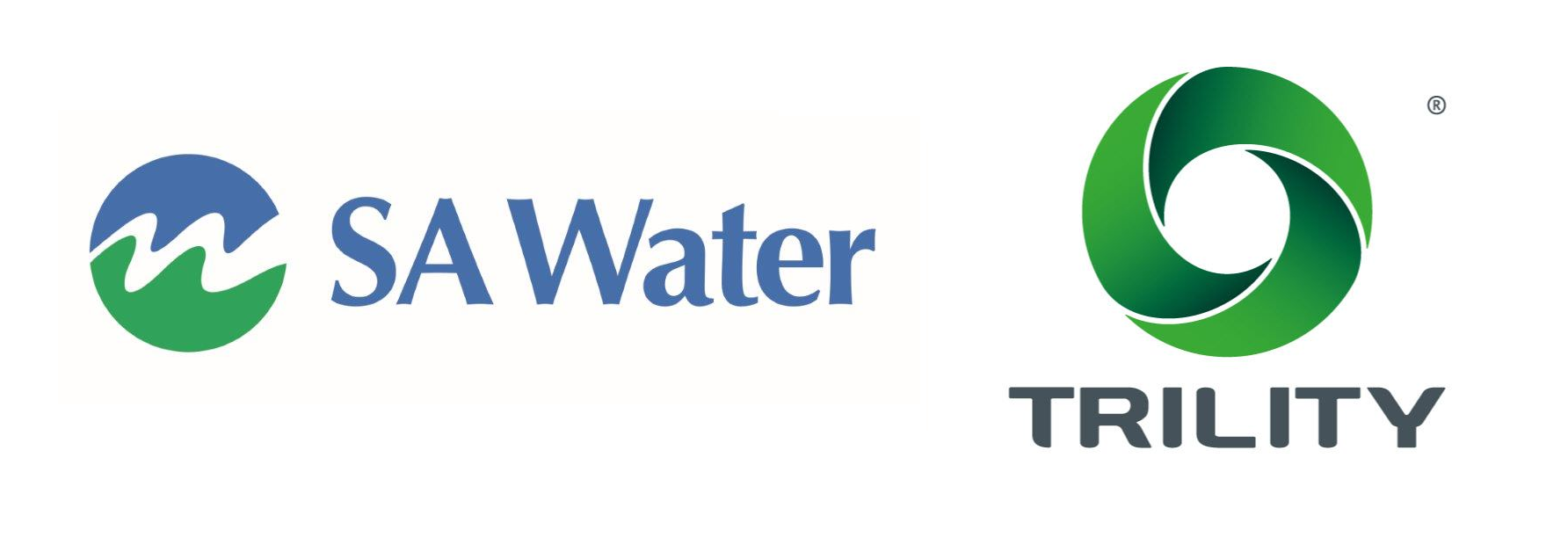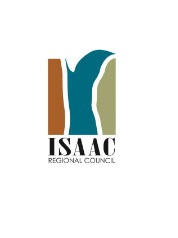Information
-
Site conducted
-
Client / Site
-
Audit commenced on
-
Audit completed on
-
Prepared by
-
Exemplar Global Lead WQMS Auditors Michael Lawrence #129230 and Sean Hinton #133942
-
Location
Key Documents
-
Relevant RWMP
-
Documents audited not otherwise captured with photographs
-
Personnel
Element 1: Commitment to the Responsible Use and Management of Recycled Water
Responsible use of recycled water
-
Involve agencies (stakeholders) with responsibilities and expertise in protection of public and environmental health
-
Ensure that design, management and regulation of recycled water schemes is undertaken by agencies and operators with sufficient experience.
Regulatory and formal requirements
-
Identify and document all relevant regulatory and formal requirements.
-
Identify governance of recycled water schemes for individual agencies, designers, installers, operators, maintainers, owners and users of recycled water.
-
Ensure responsibilities are understood and communicated to designers, installers, maintainers, operations employees contractors and end users.
-
Review requirements periodically to reflect any changes.
-
Are there any specific NSW Health Requirements that have been notified for the scheme, and if so, were the requirements met? (Licence Requirement)
-
Is the RWMP a single cohesive document which specifies the actions taken to implement the 12 Elements of the AGWR? (Licence Requirement)
Authorised Purposes (Licence Requirement)
-
Toilet Flushing
-
Washing machines
-
Irrigation
-
Cooling towers
-
Car Washing
-
Water Features
-
General wash down
-
Dust suppression
-
Street cleaning
-
Process water at non-potable/ recycled water treatment plant
-
Was there any evidence identified of unauthorised uses?
Partnerships and engagement of stakeholders (including the public)
-
Identify all agencies with responsibilities for water resources and the use of recycled water.
-
Regularly update the list of relevant agencies.
-
Establish partnerships with agencies or organisations as necessary or where this will support the effective management of recycled water schemes.
-
Identify all stakeholders (including the public) affecting, or affected by, decisions or activities related to the use of recycled water.
-
Engage users of recycled water; ensure responsibilities are identified and understood.
-
Develop appropriate mechanisms and documentation for stakeholder commitment and involvement.
Recycled water quality policy
-
Develop a recycled water policy, endorsed by senior managers, to be implemented within an organisation or by participating agencies.
-
Ensure that the policy is visible and is communicated, understood and implemented by employees and contractors.
Element 2: Assessment of the Recycled Water Supply System
Source of recycled water, intended uses, receiving environments and routes of exposure
-
Identify source of water.
-
Identify intended uses, routes of exposure, receiving environments, endpoints and effects.
-
Consider inadvertent or unauthorised uses.
Recycled water system analysis
-
Assemble pertinent information and document key characteristics of the recycled water system to be considered.
-
Assemble a team with appropriate knowledge and expertise.
-
Construct a flow diagram of the recycled water system from the source to the application or receiving environments.
-
Does the schematic accurately reflect the scheme?
-
Periodically review the recycled water system analysis.
Assessment of water quality data
-
Assemble historical data about sewage, greywater or stormwater quality, as well as data from treatment plants and of recycled water supplied to users; identify gaps and assess reliability of data.
-
Assess data using tools such as control charts and trends analysis to identify trends and potential problems.
Hazard identification and risk assessment
-
Define the approach to hazard identification and risk assessment, considering both public and ecological health.
- Compliant
- Compliant (minor shortcoming)
- Non-compliant (non material)
- Non-compliant (material)
- Not applicable/ not assessed
-
Periodically review and update the hazard identification and risk assessment to incorporate any changes.
-
Identify and document hazards and hazardous events for each component of the recycled water system.
-
Were all likely hazards identified effectively?
-
Estimate the level of risk for each identified hazard or hazardous event.
-
Consider inadvertent and unauthorised use or discharge.
-
Determine significant risks and document priorities for risk management.
-
Evaluate the major sources of uncertainty associated with each hazard and hazardous event and consider actions to reduce uncertainty.
Element 3: Preventive Measures for Recycled Water Management
Preventive measures and multiple barriers
-
Identify existing preventive measures system wide for each significant hazard or hazardous event and estimate the residual risk.
-
Evaluate alternative or additional preventive measures that are required to ensure risks are reduced to acceptable levels.
-
Document the preventive measures and strategies, addressing each significant risk.
Critical control points
-
Assess preventive measures throughout the recycled water system to identify critical control points.
-
Establish mechanisms for operational control.
-
Document the critical control points, critical limits and target criteria.
CCPs
-
Which CCP is being audited?
-
What are the CCP limits?
-
Do the critical limits match validation documentation?
-
Does the CCP achieve the required log reductions if implemented as stated?
-
Is the CCP implemented as stated?
Element 4: Operational Procedures and Process Control
Operational procedures
-
Identify procedures required for processes and activities applied within the whole recycled water system (source to use).
-
Document all procedures and compile into an operations manual.
-
Are all operational procedures fully implemented? (Licence Requirement)
Operational monitoring
-
Develop monitoring protocols for operational performance of the recycled water supply system, including the selection of operational parameters and criteria, and the routine analysis of results.
-
Document monitoring protocols into an operational monitoring plan.
-
Does the monitoring undertaken during the audit period match the monitoring plan?
Operational corrections
-
Establish and document procedures for corrective action where operational parameters are not met.
-
Were corrective actions undertaken as expected?
-
Establish rapid communication systems to deal with unexpected events.
Equipment capability and maintenance
-
Ensure that equipment performs adequately and provides sufficient flexibility and process control.
-
Is there appropriate duty/standby equipment for key processes?
-
Establish a program for regular inspection and maintenance of all equipment, including monitoring equipment.
-
Are there regular internal calibrations of monitoring equipment?
-
Are calibration solutions available and in date?
-
Are there regular external maintenance and calibration of monitoring equipment?
Materials and chemicals
-
Ensure that only approved materials and chemicals are used.
-
Establish documented procedures for evaluating chemicals, materials and suppliers.
-
Is there any mechanism established for ensuring the quality of chemicals delivered?
Element 5: Verification of Recycled Water Quality and Environmental Performance
Recycled water quality monitoring
-
Determine the characteristics to be monitored.
-
Determine the points at which monitoring will be undertaken.
-
Determine the frequency of monitoring.
-
Was the verification monitoring program implemented as stated?
-
Were all analyses undertaken in a NATA laboratory or equivalent?
-
Ensure monitoring data are representative and reliable.
-
Are records, including chain of custody retained?
Application site and receiving environment monitoring
-
Determine the characteristics to be monitored and the points at which monitoring will be undertaken.
Documentation and Reliability
-
Establish and document a sampling plan for each characteristic, including the location and frequency of sampling, ensuring that monitoring data is representative and reliable.
Satisfaction of users of recycled water
-
Establish an inquiry and response program for users of recycled water, including appropriate training of people responsible for the program.
-
Complaints and responses should be evaluated according to type, pattern, and change in the number of complaints received.
Short-term evaluation of results
-
Establish procedures for the short term review of monitoring data and satisfaction of users of recycled water.
-
Develop reporting mechanisms internally, and externally, where required.
-
Were any exceedances identified and reported immediately?
Corrective action
-
Establish and document procedures for corrective responses to non-conformance or feedback from users of recycled water.
-
Establish rapid communication systems to deal with unexpected events.
Element 6: Management of Incidents and Emergencies
Communication
-
Define communication protocols with the involvement of relevant agencies and prepare a contact list of key people, agencies and businesses.
-
Develop a public and media communications strategy.
Incident and emergency response protocols
-
Define potential incidents and emergencies and document procedures and response plans with the involvement of relevant agencies.
-
Train employees and regularly test emergency response plans.
-
Investigate any incidents or emergencies and revise protocols as necessary.
Element 7: Operator, contractor and end user awareness and training
Operator, contractor and end user awareness and involvement
-
Develop mechanisms and communication procedures to increase operator, contractor and end user awareness of and participation in recycled water quality management and environmental protection.
Operator, contractor and end user training
-
Ensure that operators, contractors and end users maintain the appropriate experience and qualifications.
-
Identify training needs and ensure resources are available to support training programs.
-
Document training and maintain records of all training sessions.
Element 8: Community Involvement and Awareness
Consultation with users of recycled water and the community
-
Assess requirements for effective involvement of users of recycled water and the community.
-
Develop a comprehensive strategy for consultation.
Communication and education
-
Develop an active two-way communication program to inform users of recycled water and promote awareness of recycled water quality issues
-
Provide information on the impacts of unauthorised use.
-
Provide information on the benefits of recycled water use.
Element 9: Validation, Research and Development
Validation of processes
-
Validate processes and procedures to ensure that they control hazards effectively.
-
Has the chlorine contact time been calculated to ensure effective disinfection?
-
Does the CCP ensure that the CT is met at all times and flows?
-
Are UV systems validated for the expected flow rate, turbidity and UVT?
-
Revalidate processes periodically or when variations in conditions occur.
Design of equipment
-
Validate the selection and design of new equipment and infrastructure to ensure continuing reliability.
Investigative studies and research monitoring
-
Establish programs to increase understanding of the recycled water supply system.
-
Use information to improve management of the recycled water supply system.
Element 10: Documentation and Reporting
Management of documentation and records
-
Document information pertinent to all aspects of recycled water quality management.
-
Develop a document control system to ensure current versions are in use.
-
Establish a records management system and ensure that employees are trained to complete records.
-
Periodically review documentation and revise as necessary.
Reporting
-
Establish procedures for effective internal and external reporting.
-
Produce an annual report aimed at users of recycled water, regulatory authorities and stakeholders.
-
Was reporting in accordance with the Reporting Manual (Licence Requirement)
Element 11: Evaluation and Audit
Long-term evaluation of results
-
Collect and evaluate long-term data to assess performance and identify problems.
-
Document and report results.
- Compliant
- Compliant (minor shortcoming)
- Non-compliant (non material)
- Non-compliant (material)
- Not applicable/ not assessed
Audit of recycled water quality management
-
Establish processes for internal audits.
-
Are external audits conducted as required?
-
Document and communicate audit results.
- Compliant
- Compliant (minor shortcoming)
- Non-compliant (non material)
- Non-compliant (material)
- Not applicable/ not assessed
Element 12: Review and Continual Improvement
Review by senior managers
-
Senior managers review of the effectiveness of the management system.
-
Evaluate the need for change.
- Compliant
- Compliant (minor shortcoming)
- Non-compliant (non material)
- Non-compliant (material)
- Not applicable/ not assessed
Recycled water quality management improvement plan
-
Develop a recycled water quality management improvement plan.
-
Ensure that the plan is communicated and implemented, and that improvements are monitored for effectiveness.
-
Were all high priority actions undertaken in the timeframes committed?
-
Has the effectiveness of the improvement action been reassessed through the risk assessment process?









